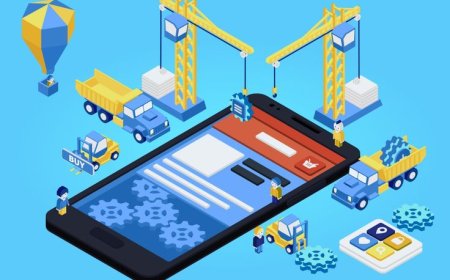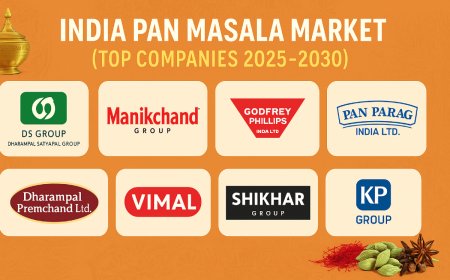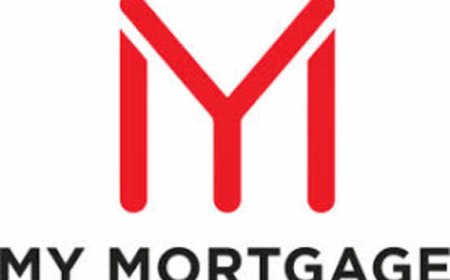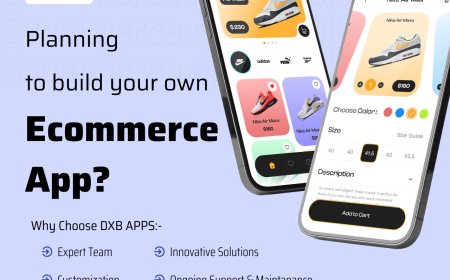Challenges and Solutions in On-Demand Delivery Systems
Explore key challenges and smart solutions in on demand delivery app development to build efficient, secure, and scalable delivery platforms for modern users.

The rise of digital commerce and changing consumer behavior has driven rapid growth in on-demand delivery platforms. From food and groceries to home services and medical supplies, users now expect everything to be available at their fingertips. However, building and operating a successful on-demand delivery system is complex and full of challenges. This blog explores the key hurdles businesses face and provides practical solutions to overcome them.
Meeting High Consumer Expectations for Fast Deliveries
One of the biggest challenges in on-demand delivery is meeting customers' expectations for speed and accuracy. Consumers expect deliveries within hours or even minutes, and any delay can result in dissatisfaction and loss of loyalty.
Solution: Businesses must optimize their logistics network and rely on real-time tracking, route optimization, and local partnerships. Integrating AI-powered dispatch and predictive analytics into the delivery system can enhance efficiency and help anticipate demand fluctuations.
Managing Real-Time Inventory and Order Tracking Systems
Real-time inventory management is crucial in on-demand delivery systems, especially when dealing with perishable or time-sensitive items. Inaccurate stock information can lead to canceled orders, frustrated users, and operational inefficiencies.
Solution: Integrate your on-demand delivery app with robust inventory management systems that sync in real time. Implement APIs with suppliers and warehouses to ensure inventory visibility. Barcode scanning and IoT devices can further enhance tracking accuracy.
Balancing Supply and Demand Efficiently in Peak Hours
Demand in on-demand systems often fluctuates throughout the day, with peaks during lunch hours or weekends. Balancing the supply of delivery partners with fluctuating demand can be difficult and may lead to service disruption or increased costs.
Solution: Implement dynamic pricing models and incentive-based driver scheduling to ensure availability during peak hours. Predictive analytics can help forecast high-demand periods, allowing businesses to prepare proactively.
Ensuring Consistent Delivery Partner Availability
Driver or delivery partner availability is one of the most unpredictable parts of any on-demand delivery ecosystem. High attrition rates and lack of motivation during off-peak hours create reliability challenges.
Solution: Create attractive compensation packages and gamified reward systems to retain and motivate delivery partners. Regular feedback collection, training sessions, and route preference options can also improve partner satisfaction and retention.
Maintaining High App Performance and User Experience
An on-demand delivery app must perform reliably, even during high-traffic hours. Slow load times, poor UX design, or app crashes can drive users to competitors. Providing a seamless and intuitive experience is critical.
Solution: Choose a performance-first approach during on demand delivery app development. Focus on responsive UI, minimal load times, and real-time communication features like chat and notifications. Regular testing and updates are necessary to resolve performance bottlenecks and keep the app compatible with new devices and OS versions.
Addressing Security and Data Privacy Concerns
On-demand delivery platforms process sensitive customer information, including payment details, addresses, and behavioral data. Any breach can lead to legal liabilities, reputational damage, and user distrust.
Solution: Implement end-to-end encryption, secure APIs, and multi-layered authentication protocols in your delivery app. Regular security audits, compliance with data protection laws like GDPR or CCPA, and transparent privacy policies also help build user trust.
Reducing Operational Costs Without Affecting Service Quality
Controlling costs is one of the most difficult aspects of managing an on-demand delivery business. High fuel costs, delivery partner commissions, app maintenance, and infrastructure investments can all add up quickly.
Solution: Automate as many processes as possible, from route planning to customer support. Outsourcing to third-party logistics or cloud-based platforms can help reduce infrastructure costs. While considering the delivery app development cost, choose scalable cloud architecture to avoid large upfront investments and allow for future growth.
Handling Complex Payment and Refund Mechanisms
With multiple stakeholders in the delivery ecosystem, payment processing can get complicated. This includes commissions, promotional discounts, refunds, and split payments across vendors and partners.
Solution: Build a secure and flexible payment system that supports multiple gateways, real-time settlements, and automated refund processing. Transparent commission structures and detailed billing summaries can reduce disputes and improve partner trust.
Choosing the Right Technology Stack and Development Partner
The technology stack you choose has a direct impact on performance, scalability, and future adaptability of your on-demand delivery app. Selecting the wrong tools or vendors can result in frequent downtimes, poor integrations, and unnecessary costs.
Solution: Choose technology that aligns with your business goals, scalability requirements, and budget. Partner with a reliable Mobile App Development company in USA to ensure local compliance, quality assurance, and post-launch support. Make sure the developers have proven experience in handling real-time systems and building scalable cloud infrastructures.
Navigating Market Competition and User Retention
With many players entering the on-demand space, customer acquisition is becoming more expensive. Retaining users requires continuous innovation and loyalty incentives, or risk losing them to competitors.
Solution: Focus on delivering personalized experiences using AI-powered recommendations and targeted offers. Implement loyalty programs, push notifications, and referral systems to keep users engaged. Regularly update your app based on user feedback to improve satisfaction and brand loyalty.
Exploring Monetization and Sustainable Business Models
While launching an on-demand app can be fast, generating sustainable revenue takes time. Free delivery expectations, promotions, and operational costs can erode profit margins if monetization is not well planned.
Solution: Use a combination of monetization models like delivery fees, subscription plans, commission from vendors, and featured listings. If you plan to launch an App For Sale, build it with modular architecture and customizable features to appeal to a broader market or niche investors.
Final Thoughts
Building an on-demand delivery app is a high-potential yet high-risk venture. The market is growing rapidly, but so are user expectations, competition, and operational complexities. Whether you are entering the food delivery, grocery, logistics, or healthcare segment, addressing these challenges early in the planning stage can save significant costs and headaches later.
By investing in robust technology infrastructure, real-time systems, and scalable delivery models, businesses can not only overcome these challenges but also deliver exceptional customer experiences. Prioritize user trust, app performance, and cost-efficiency in your on demand delivery app development journey to ensure long-term success.
On-demand delivery systems are reshaping how businesses and consumers interact. Strategic planning, smart investment in technology, and a deep understanding of the ecosystem will help your delivery platform stand out and scale sustainably.

























